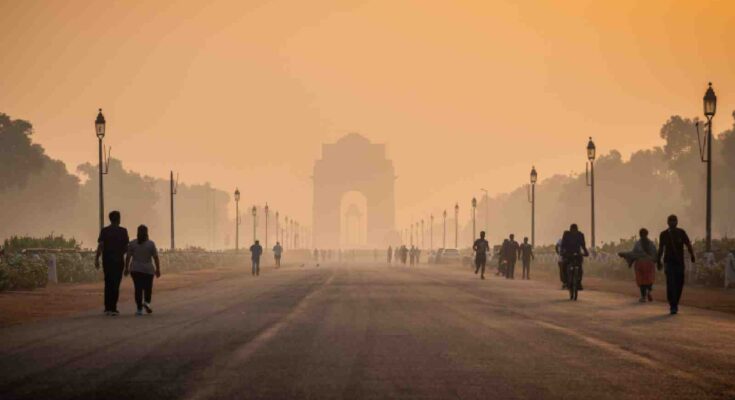A dust storm covered New Delhi almost like a blanket on Tuesday. The air quality dipped and the visibility was reduced to 1,000 meters, as per the India Meteorological Department (IMD). This Delhi dust storm is likely extend to Rajasthan and Haryana for a few more days. It would be wise to raise your guard to protect yourself from health problems. Let us look at the side effects of dust storm on your health if you don’t exercise caution.
Health Shots reached out to Dr Suneel Nagar, consultant at Respiratory Asian Fidelis Hospital, Greater Faridabad, and Dr Amit Bangia, Associate director of Dermatology at Asian Hospital, Faridabad, Haryana, to understand how dust storm may affect your health.

How does a dust storm affect your health?
When the air you inhale contains harmful particles, it may end up impacting your health.
1. Allergic reaction
Dust storms can lead to an allergic reaction in patients who are suffering from asthma. Dr Nagar highlights that exposure to harmful particles can trigger allergic reactions, which can lead to acute exacerbation of asthma/asthma attacks. If left unattended, it can also lead to life-threatening breathing problems.
Also Read: Allergic asthma: 3 effective ways to guard yourself against the wheezing and cough
2. Cardiovascular complications
Exposure to the particulate matter (PM) in dust can go into the bloodstream and lead to cardiovascular complications, says Dr Nagar. A 2014 study published in Toxicological Research found that PM in the air can increase the risk of heart disease, stroke, blood pressure and other cardiovascular diseases.
3. Skin problems
Exposure to harmful particles present in the air can lead to several skin problems. Dr Bangia says, “Dust particles and pollutants can strip the skin of its natural oils, which can make your skin feel dehydrated. Then there are cases of allergic reactions that happen because these dust particles cause irritation, allergies and various kinds of hives.”

Patients with preexisting skin conditions such as atopic dermatitis and psoriasis are more prone to develop these kinds of allergic reactions. These manifest in the form of irritation, redness, itching, or burning in the skin. Here are some ways to avoid skin problems during the current weather:
- Limit your exposure to the outside while in a dust storm.
- Keep the windows closed to avoid these particles to enter your home.
- Use an air purifier in your home.
- Cover your skin if you go out.
- Moisturise your skin well.
- Avoid using harsh products during the dust storm.
- Stay well hydrated.
4. Itchy and burning eyes
Another consequence of getting exposed to dust particles is itchy and burning eyes. A study published in the International Journal of Environmental Research and Public Health found that continuous exposure to dust particles can lead to eye conditions as well.
Tips to keep yourself protected from the dust storm
With dust storms taking over the city, it is vital for people to avoid exposure to dust particles. Dr Nagar says patients who have an obstructive airway disease, long Covid-19, or infants, pregnant women and older people with comorbities, should try to avoid outside exposure. You should stay in the closed gated room with air purifiers if available. Stay in air conditioner premises and avoid vigorous exercise. You must carry an inhaler or rescue bronchodilators (medication that makes breathing easier) whenever you go out.
Wear an N95 mask or any sort of covering over your nose and mouth which can provide some protection from large ppm particles, but still smaller particles are more hazardous so staying away from such places are the best solution, adds the expert.
Source link




